How to Draw Cool Hairstyles
Hair is very important for our characters, lending a personality of its own, so cartoon hair exactly every bit we imagine it can be a real challenge.
But in that location are many different approaches we can take! For me, the most important rule is to understand what I am drawing, so that I don't go lost halfway through.
1. Structure and volume
First, nosotros must define the areas of our character'south pilus. Marking a reference bespeak or a road which divides the hair can help us. For instance, at the hair departing (i). From in that location, it becomes easier to see the direction that each section volition accept (2).
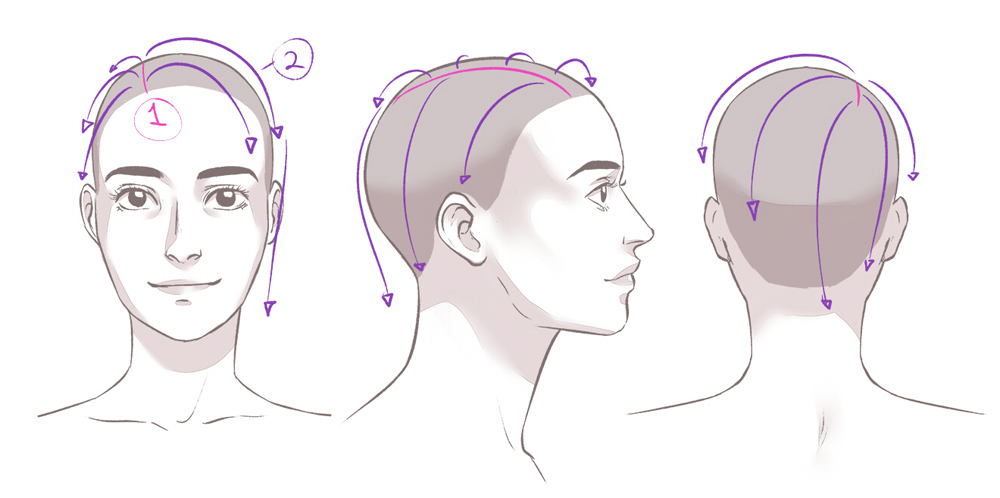
Every bit my drawing advances, I ponder some possibilities. This character will have straight hair, cut merely over the shoulders. I think no bangs would exist amend, but I want some hair to encompass i eye, and the tips of the hair to curlicue inwards.
I start to draw these lines. I might change my mind afterward, but this phase allows me to see more clearly.
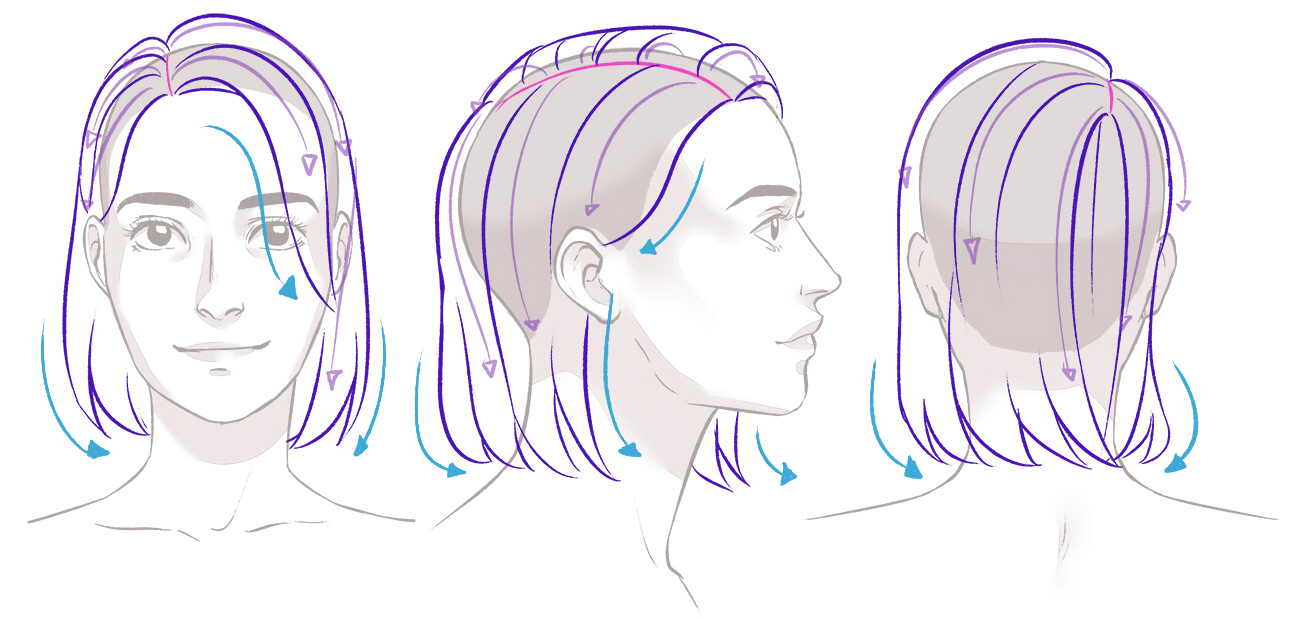
The head is a sphere. If we don't take that into business relationship, the cartoon could start to flatten. This is a fairly mutual error. Let's accept a await using a mesh to demonstrate:
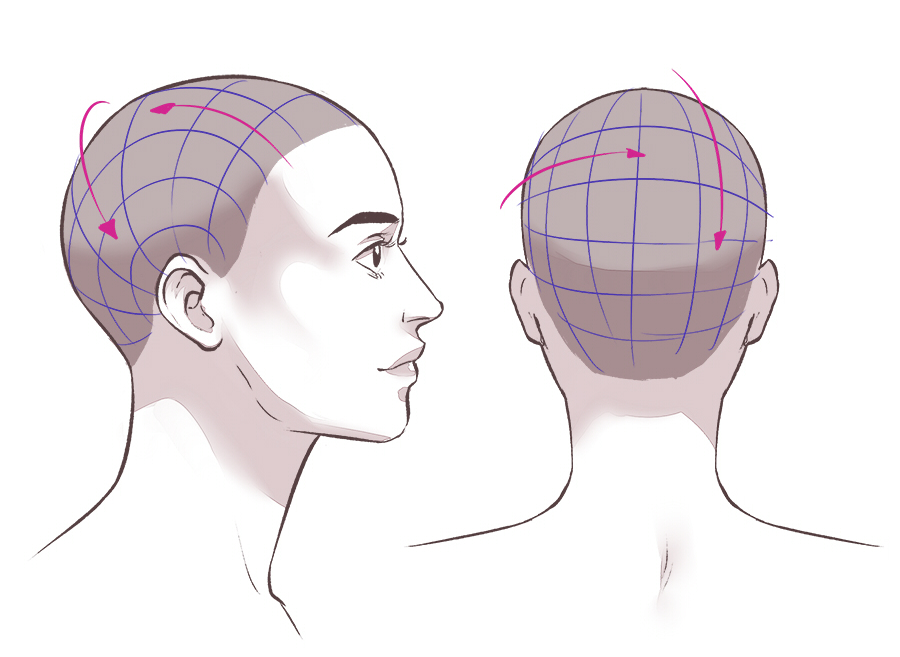
Each hair comes from a specific bespeak and grows in a different direction. Even when the hair is very long, the gravitational force eventually brings it down.
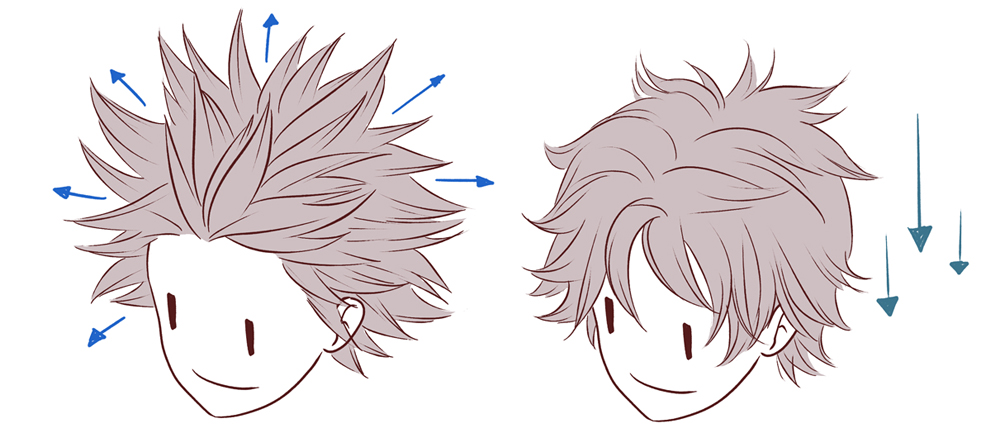
Pilus locks must somehow wrap the caput following the curves of its surface. Cheque the difference between these two images. Both circles have a layer around them, merely A looks more like a apartment shape, whereas B looks to be more spherical.
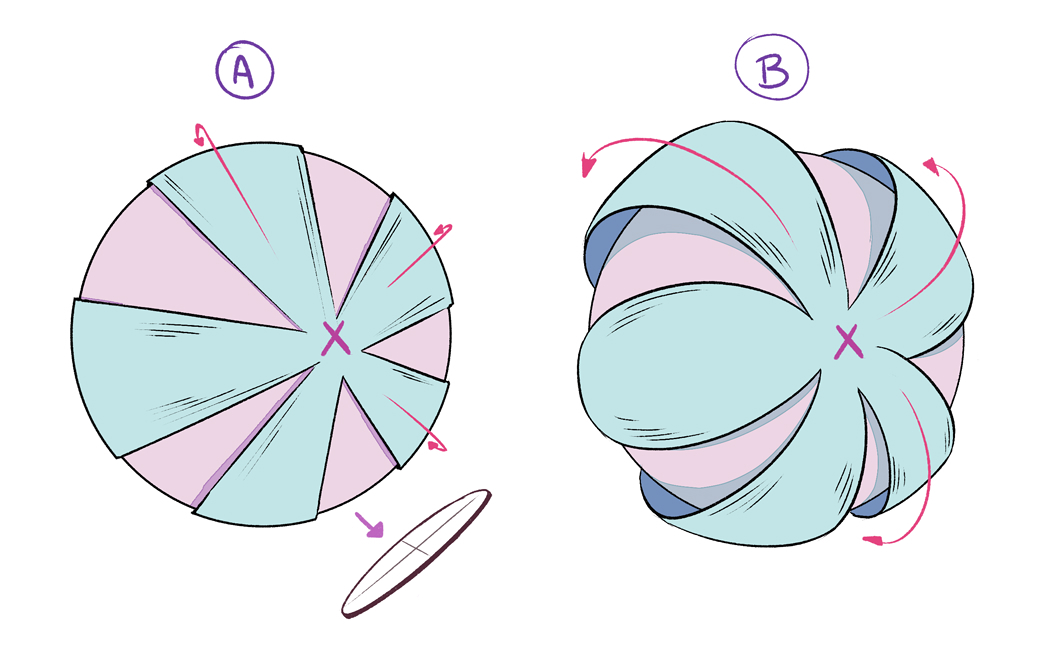
Hair does non glue itself to the head. Permit's proceed in heed that in that location is always space between strands and over layers of hair, which builds up to create volume.
• The greenish area (1) indicates the gap between the caput and the edge of the pilus.
• On the back of the caput (2) at that place are several layers of hair, but since it's direct hair, the edges are almost unaffected, which allows a very subtle falling around the neck.
• The book varies depending on the amount of hair on each side of the head (3).
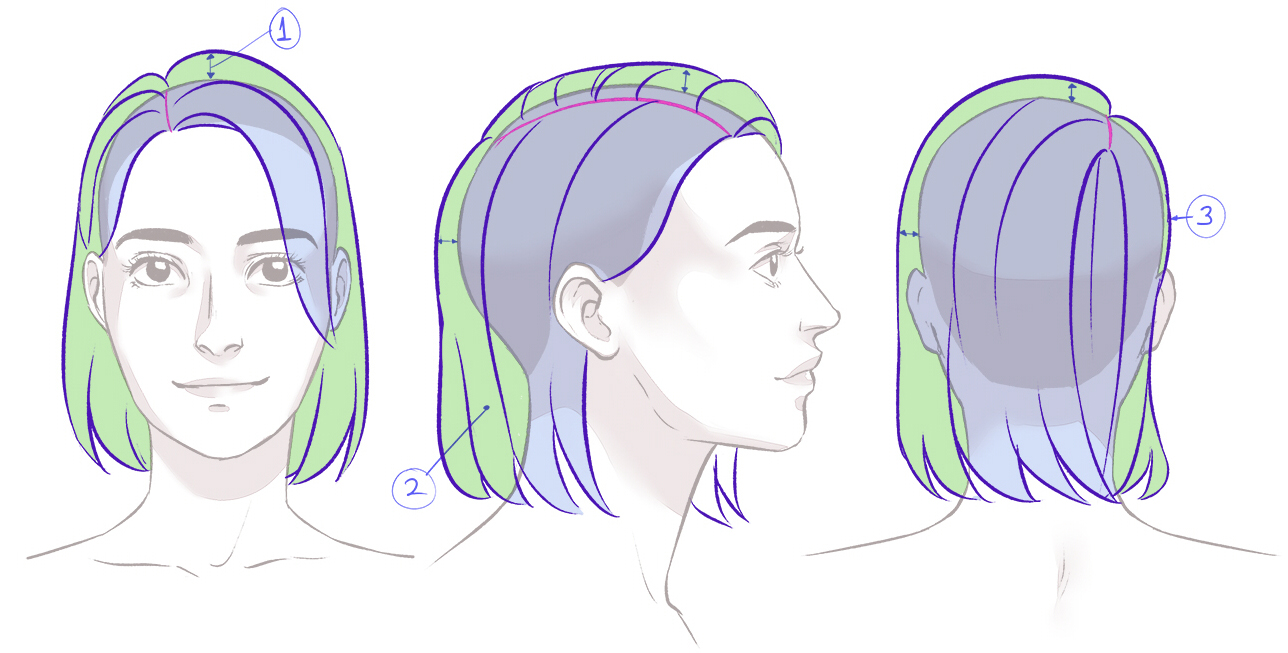
Many artists choose to simplify the pilus using basic shapes, or anything else that helps them define the volume, the angles, and to hands approach values. And so they add details to the surface.
Task: I always recommend learning using real-earth references. Take some photos of hair styles and identify where the locks are coming from and where they are going. You tin can also draw their edges.
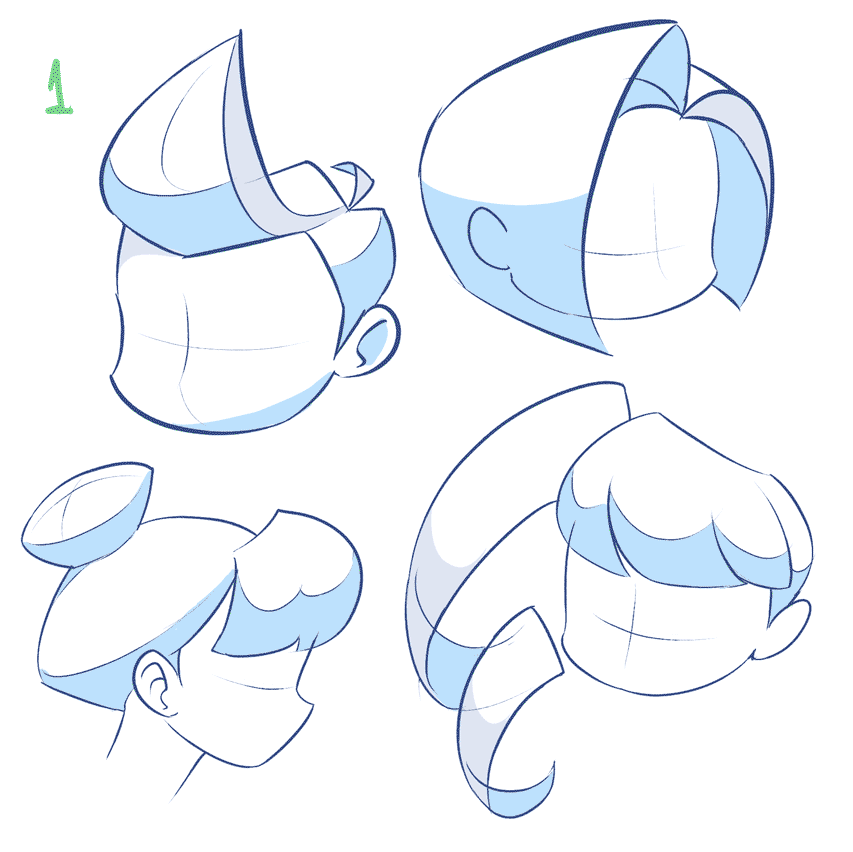
▲Animated GIF
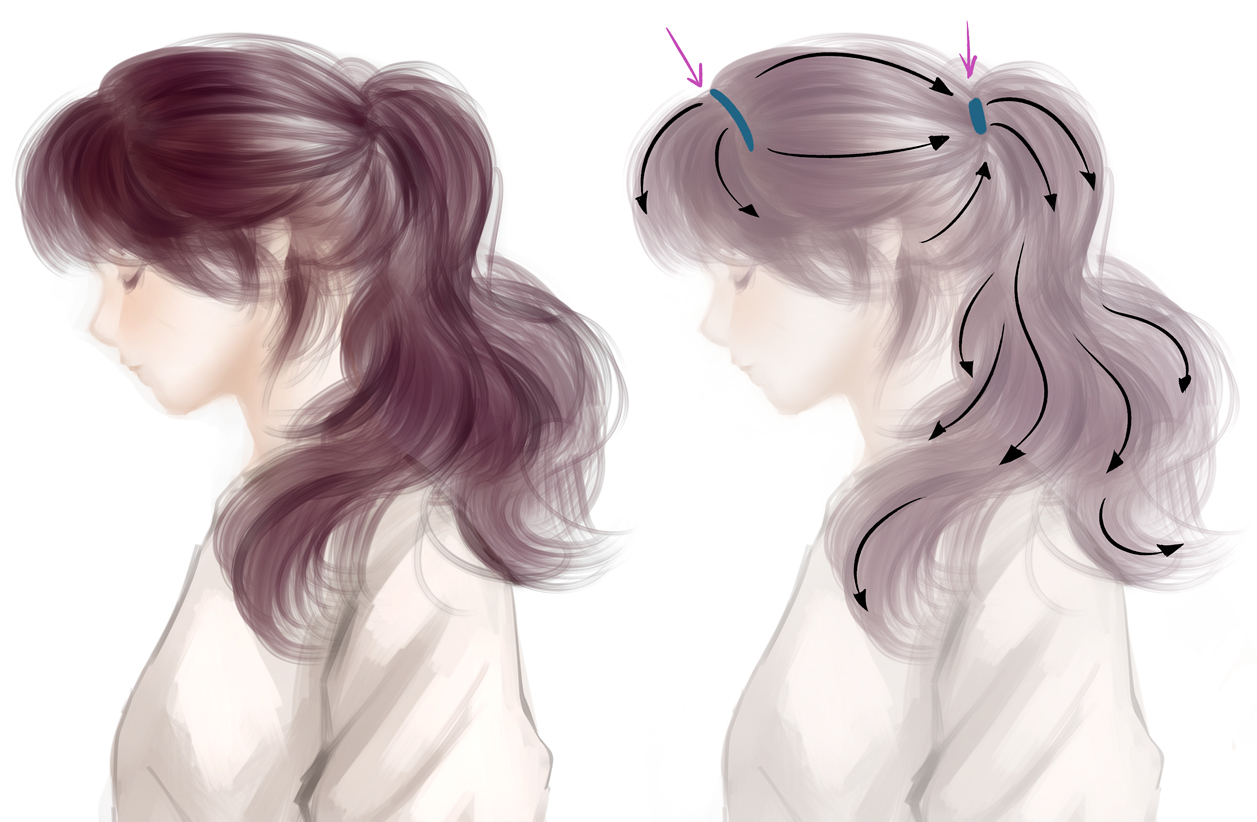
2. Shape:
Some cartoon styles demand more endeavour in the detailing stage than others, but it is always necessary to accept into account the standard characteristics of hair. Let'south look at it this way:
The overall hair is a set of many locks > locks are a set of strands
• Hair does not form a compacted shape, nor a consistent one. It is very calorie-free, and then when the character moves, the wind, the humidity, or anything that surrounds it tin affect its silhouette.
Permit's see some examples, pace by footstep:
Straight hair:
• My first stride was to draw the edges of the main lock (the one which will be the base of our drawing), following the direction in a Southward shape. Then I filled information technology in to create its silhouette.
• The little strands on Step 3 follow a very similar direction, only slightly more than pronounced, enough to add dynamism to the shape.
Finally, I added some strands which move in completely different directions than the original one, to balance the composition and make it more attractive.
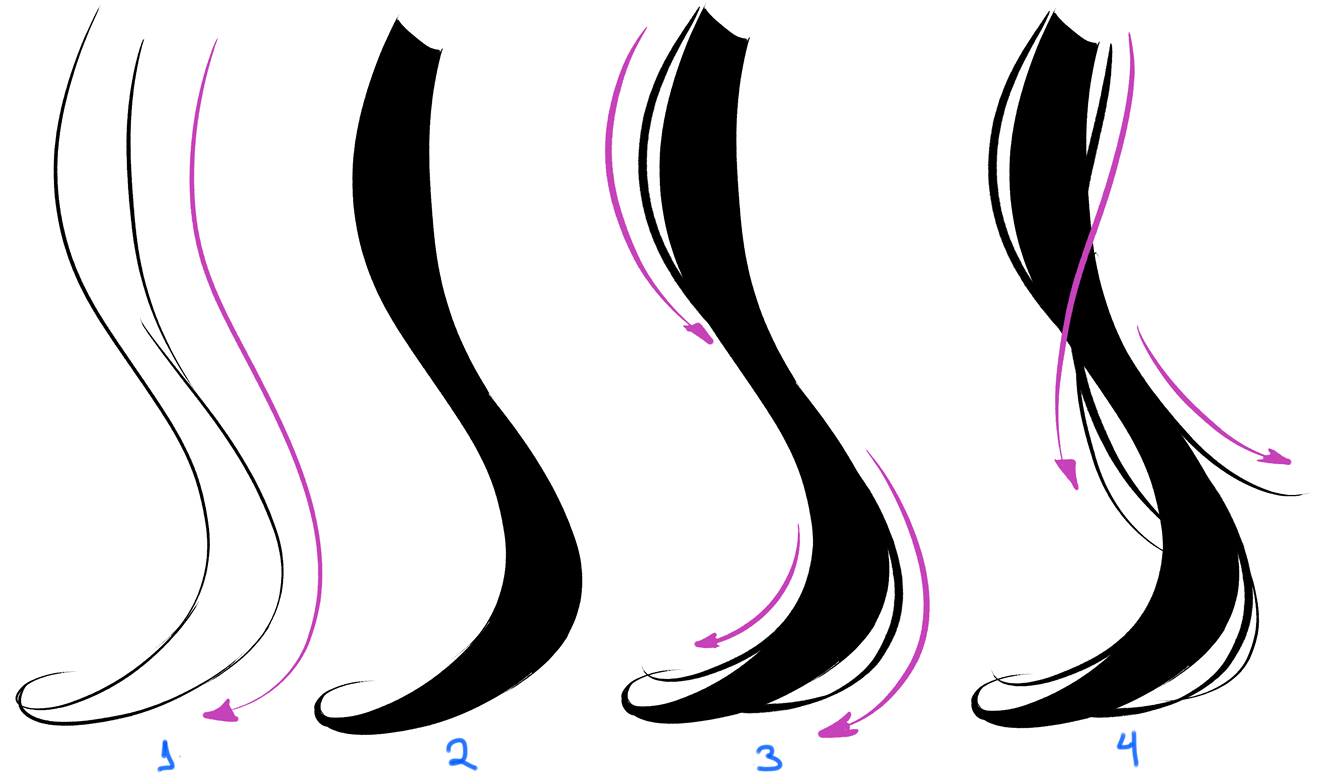
Curly hair:
• The lock curls itself around in a cylindrical shape. Try non to make this shape completely direct, otherwise the lock will finish up looking similar a jump!
• And then I simplify, outset drawing a ribbon. Run into how it becomes thinner as it approaches the tip. The 3rd step is to detail the external and internal sides (A).
• I added some texture, post-obit the direction of the curves. I also put in some irregularities around the edges to lucifer the surface (B).

We tin can employ this method to create more interesting and circuitous silhouettes:
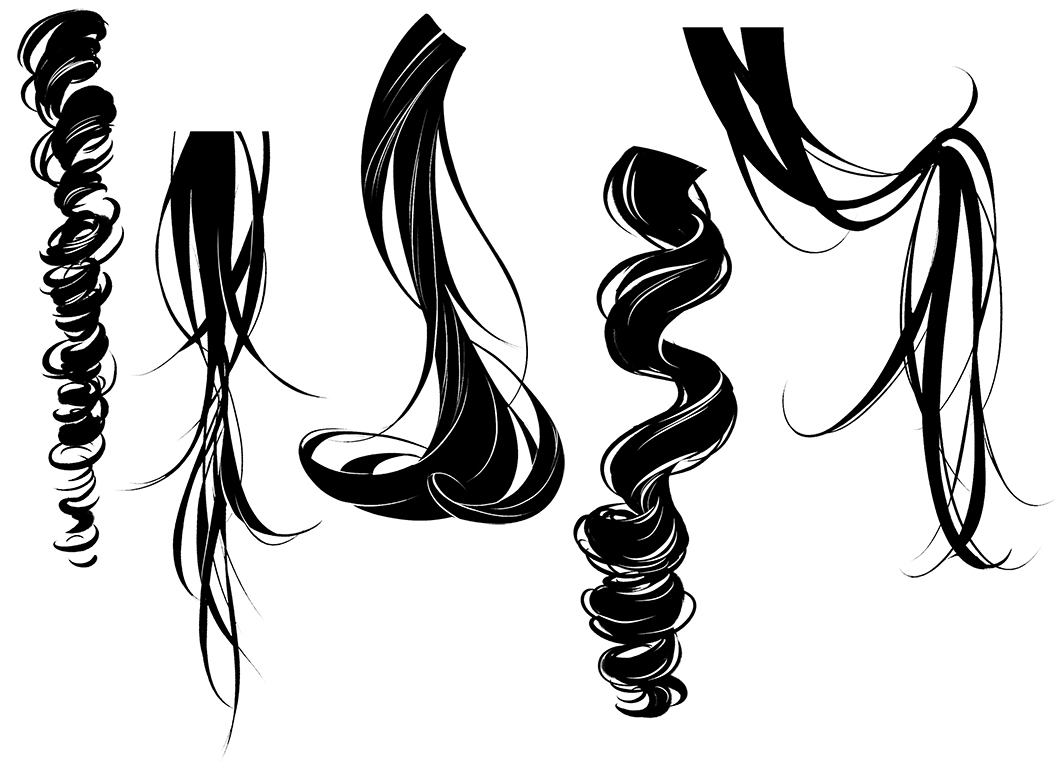
I followed all these criteria to brush upwards my character so I added the necessary amount of detail while keeping it unproblematic.
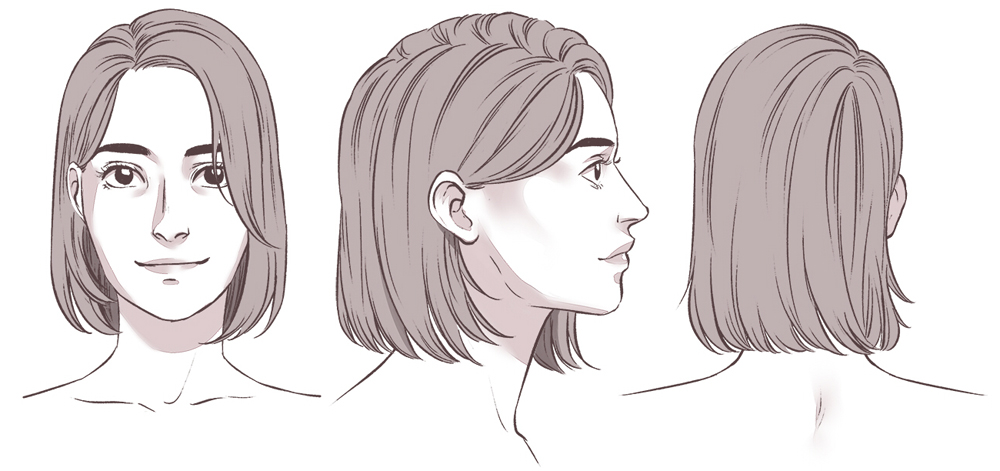
3. Adding values:
I am going to utilise the value scale to define details and give a 3D consequence to the shapes.
The beneath paradigm is a hairstyle consisting of irregular layers and overlapping locks. If we only had the silhouette, we wouldn't notice all these details, thus I need to contrast the dissimilar sections in order to highlight these shapes.
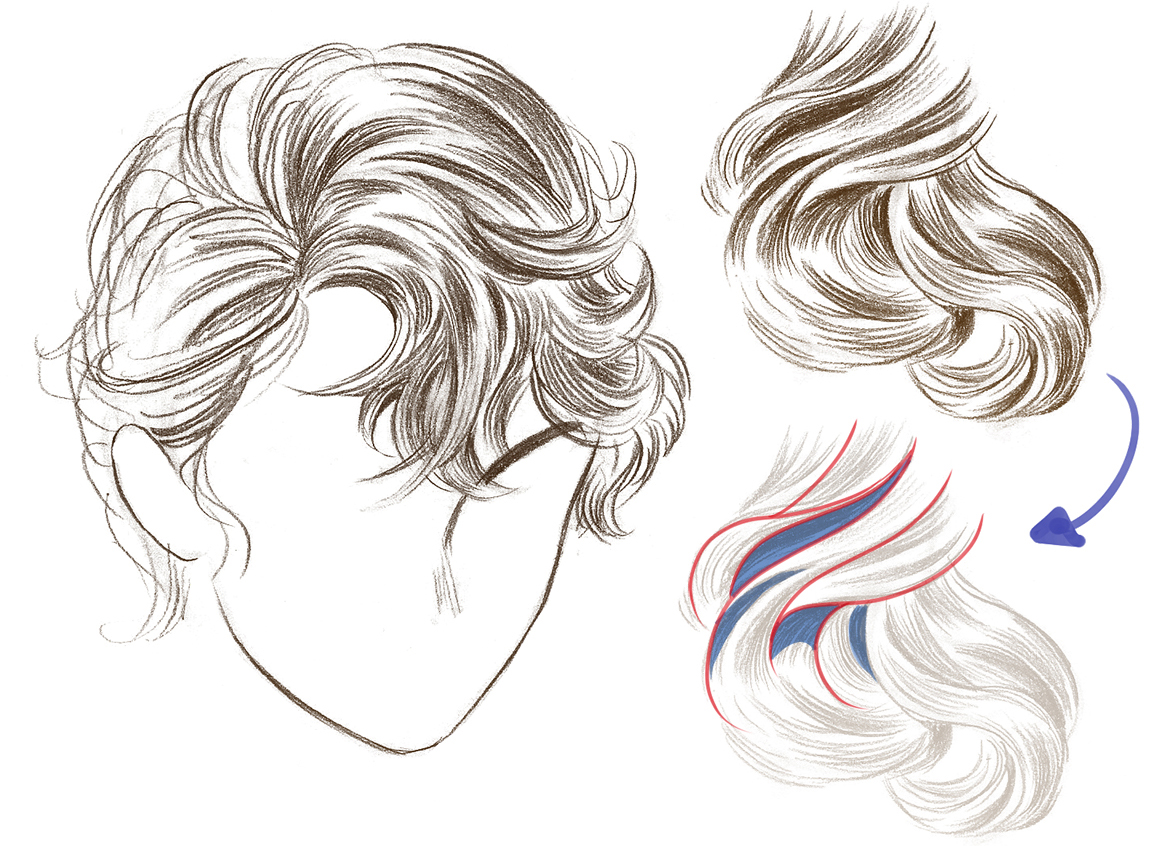
This is the step-by-pace process which volition help us sympathise better:
• I define the edges (i). In pace 2, the mid-tones tin exist seen in the corner; the strokes follow a single direction to maintain the harmony of the shape, and the illuminated areas are left blank.
• In stride 3, we utilise darker shades to darken and deepen some areas, for instance, on the overlapping layers as indicated by the arrows. I continue this mode until the drawing is finished.
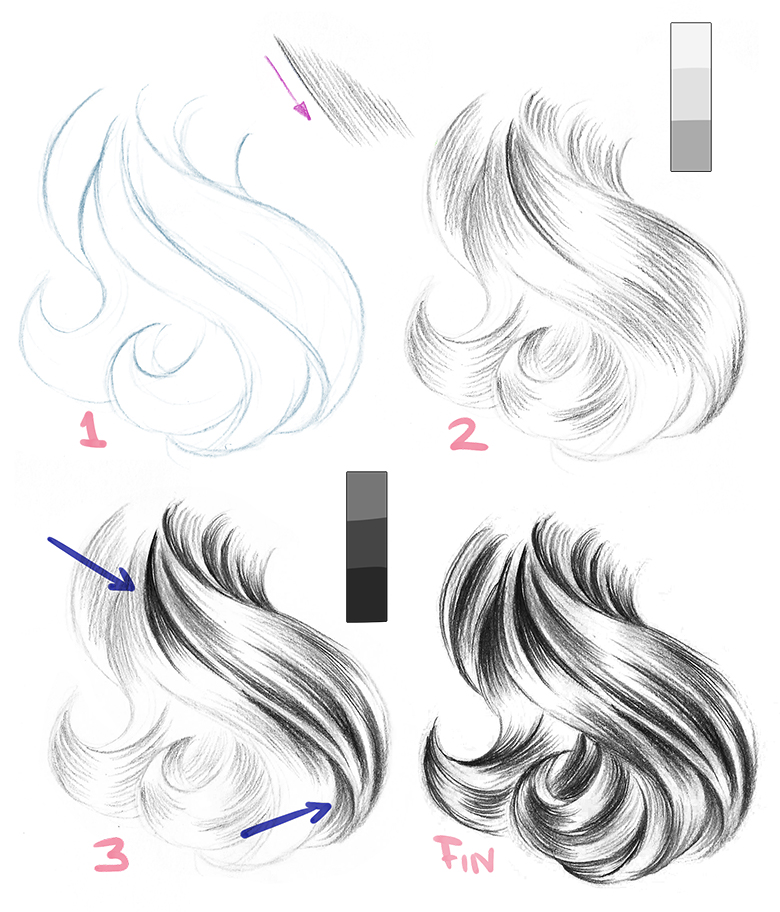
It is not a trouble if we are merely guided by our intuition when cartoon shadows and lights. "Lighting" is an all-encompassing and super interesting topic, and I am afraid that what I explain here is not enough to comprehend it! I'd recommend researching and practicing as much as possible.
Hair types and textures:
Textures brand unique sensations and enrich our illustrations. Information technology may be overwhelming to call back about hair textures, but instead of working exclusively with lines, nosotros must not refuse other tools that can make tasks easier also as creating incredible furnishings, both in digital and traditional fine art spaces. It is always good to experiment to develop methods that highlight the qualities of our manner!
I don't have a unique answer to which tool to use in each instance, just hither is a clue: imagine the feeling of each type of hair!
Brusk, near shaved hair feels like a carpeting —I've e'er idea and so! And when I draw it, I like to give it a prickly, pointy, rough advent.
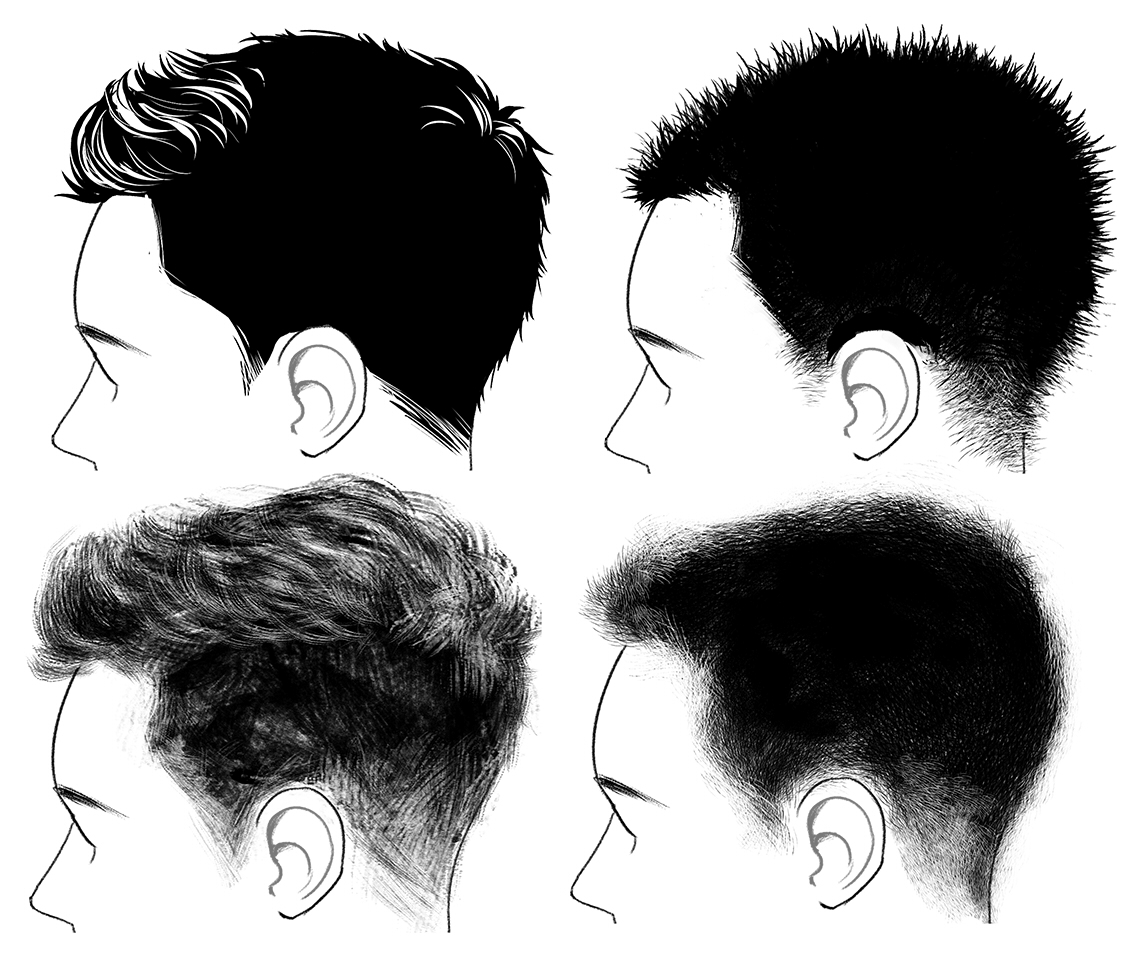
For wavy hair, I call up about the sea waves, curves finding one another. There is life, energy, and move.
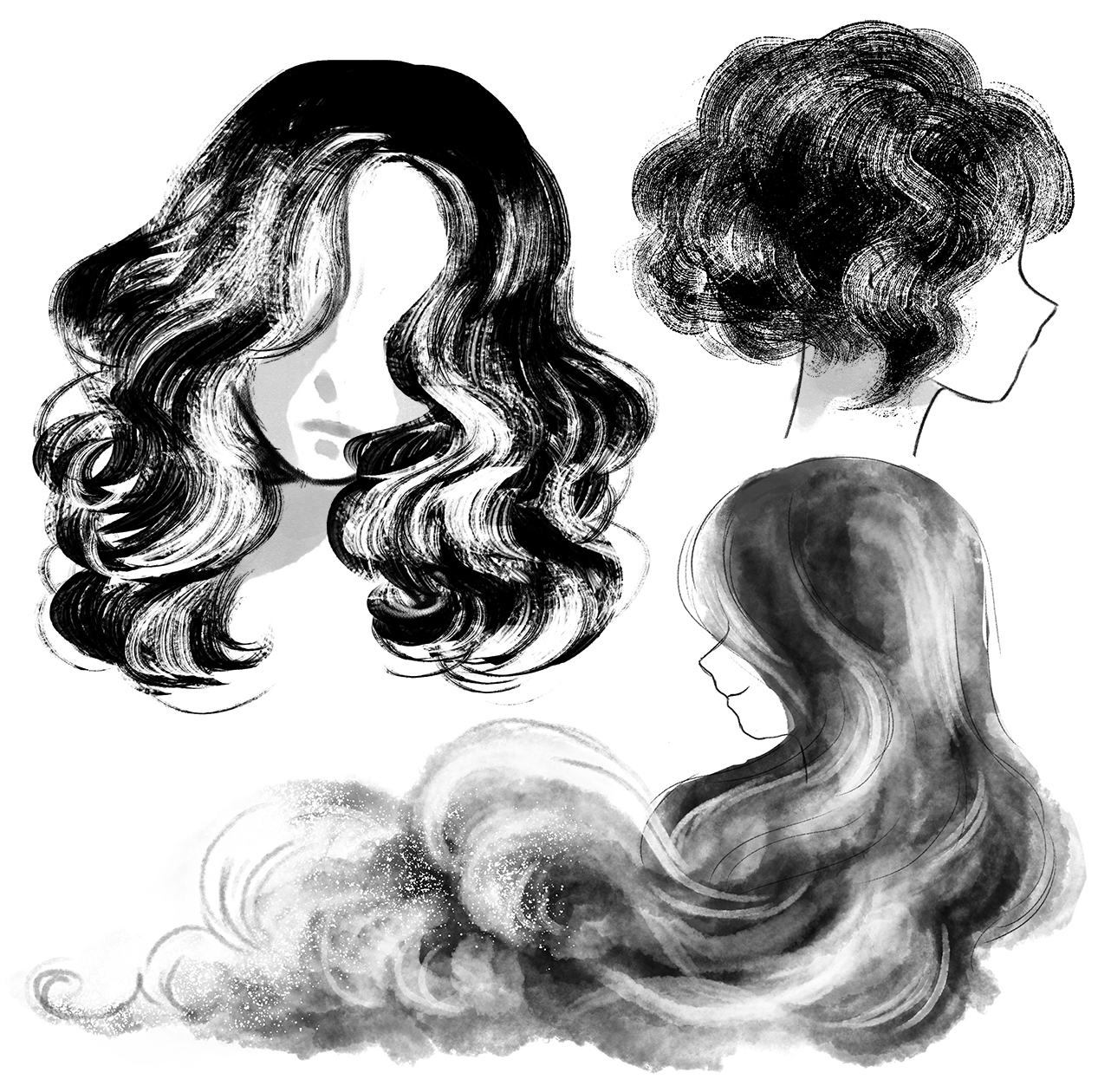
On the other hand, directly hair has serene, at-home, simple and perchance elegant lines.
Explosive —but non also much, curly hair is voluminous, hard to command and, many times, hard to comb! Fluffy, soft, playful and gorgeous, those are some adjectives we can think about. Textures save fourth dimension and add complication to the shapes.
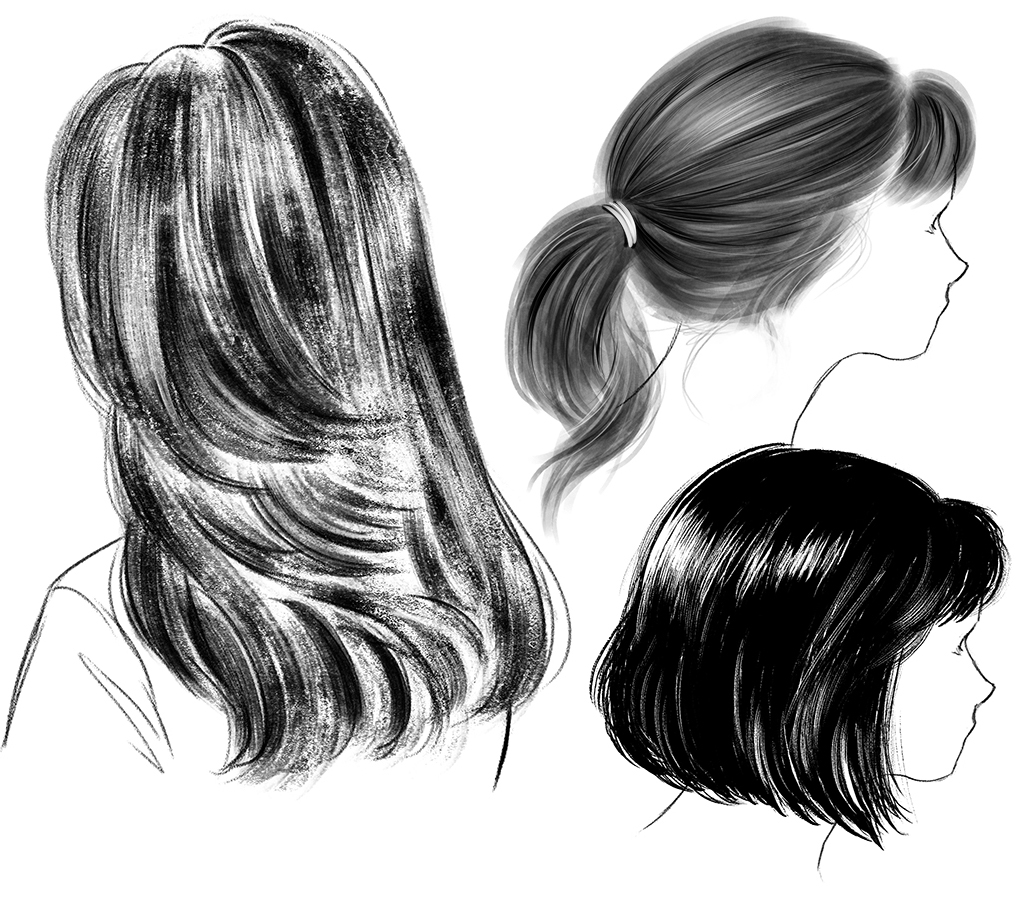
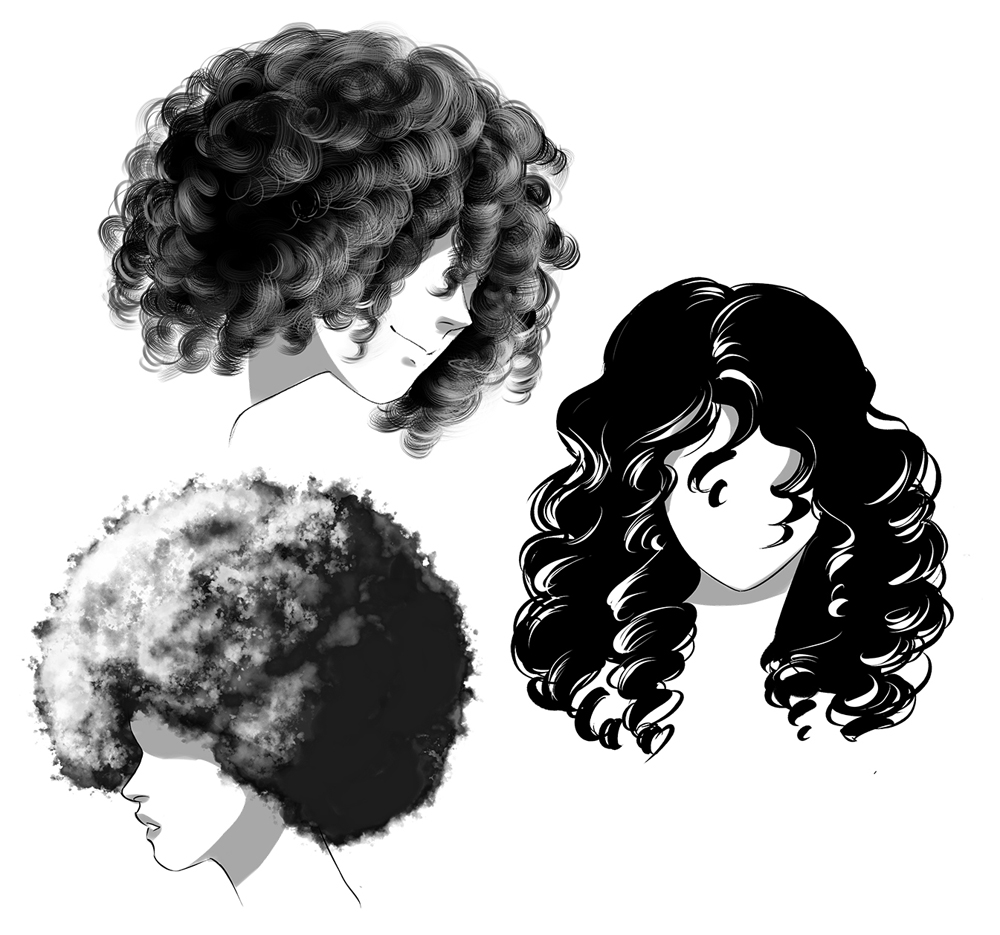
Conclusion:
These are all full general approaches that use tin can utilise to make pilus look like hair. If you want to go further, break the rules! In that location is nothing wrong in, for instance, ignoring gravity, or exaggerating the book of hairstyles, or creating pilus made of fire! At that place are so many possibilities we tin can play with to create new things. I hope this article has been helpful for y'all. If yous wish to run into some of my works, please have a look at my social networks and my portfolio:
https://world wide web.instagram.com/eri_duh/
https://twitter.com/eri_duh
https://www.artstation.com/eridey
Thank you very much for reading!
Source: https://www.clipstudio.net/how-to-draw/archives/159719
0 Response to "How to Draw Cool Hairstyles"
Post a Comment